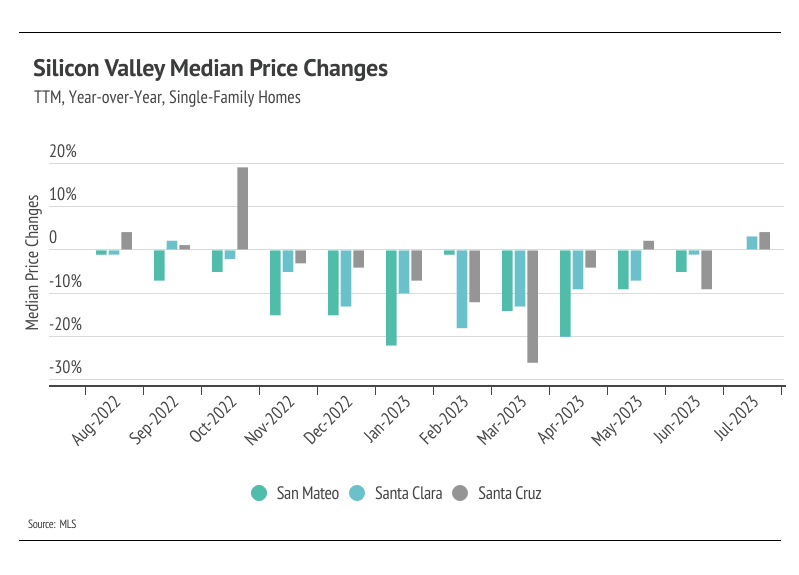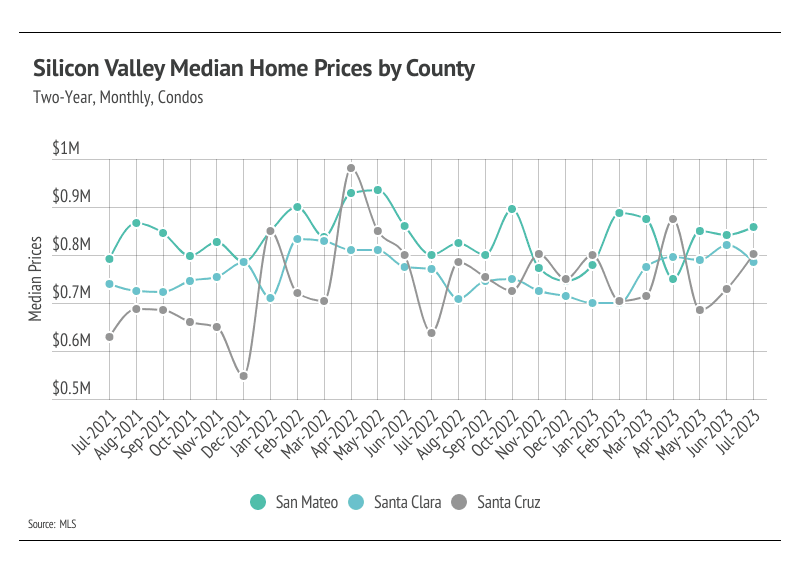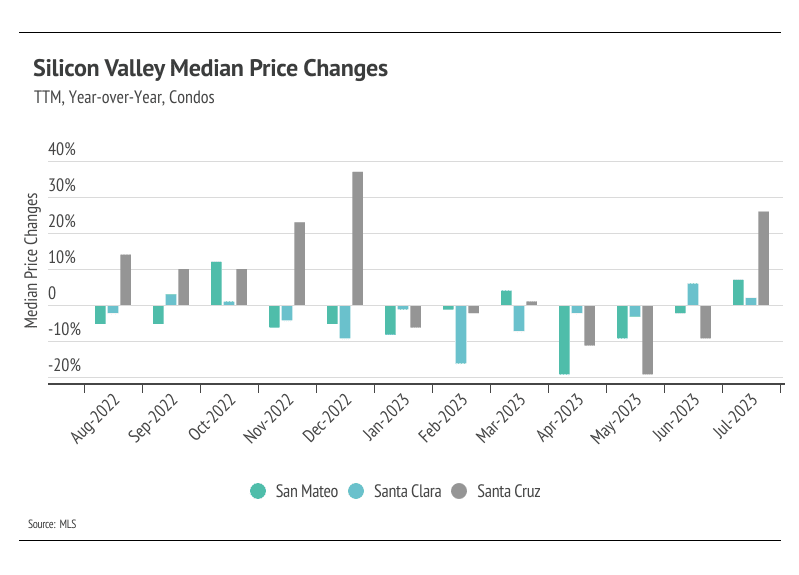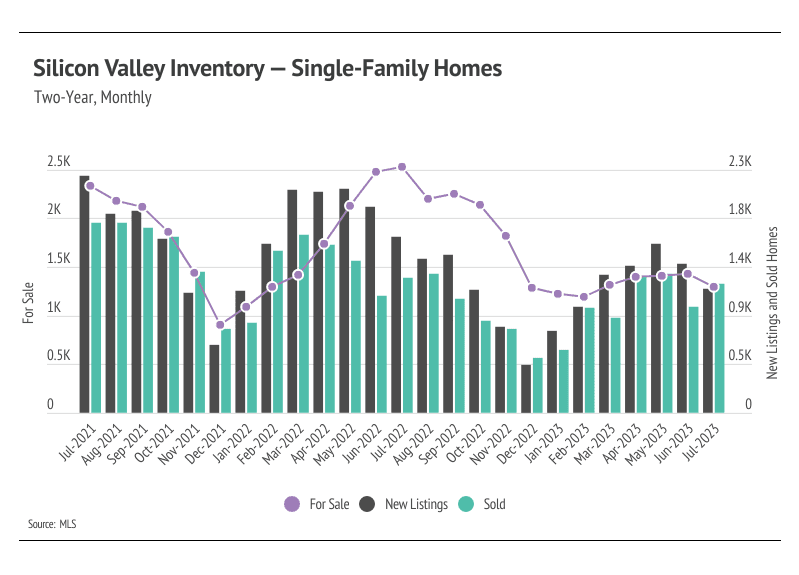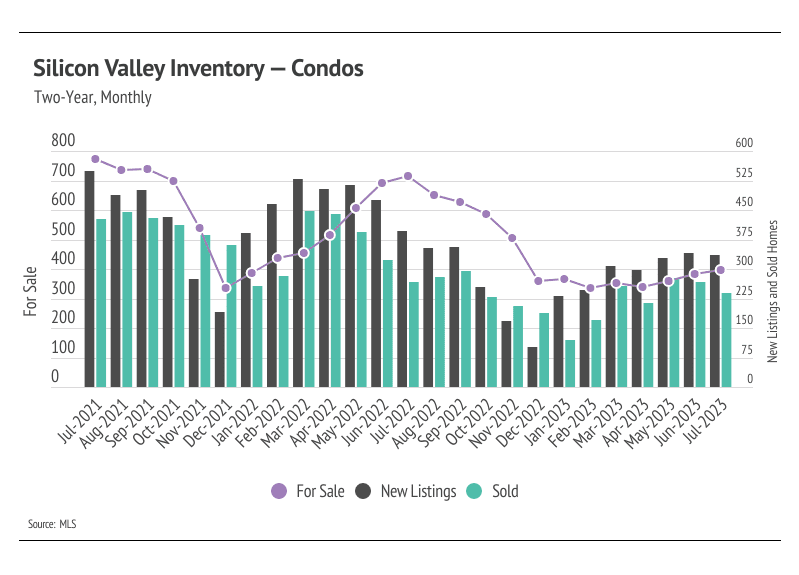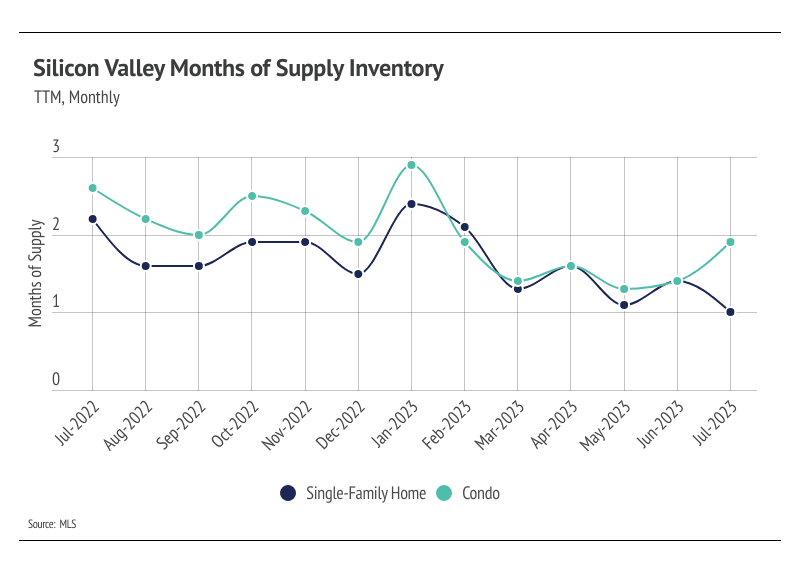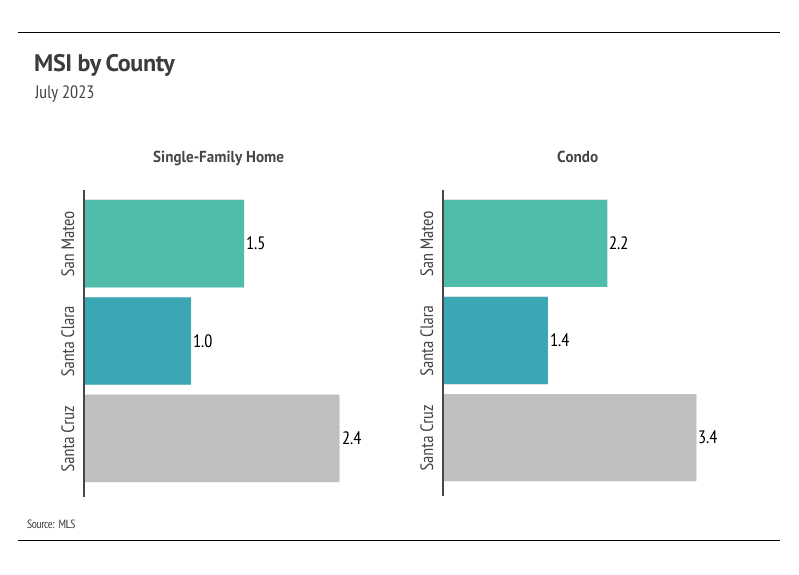The Big Story
Steady-Ish As She Goes
-
The median home price in the United States landed 1% below the all-time high it reached in June 2022 after appreciating 13.6% in 2023. At the same time, mortgage rates are 1% higher than a year ago, which means the monthly cost of a home is 10% higher than last year.
-
The Fed hiked rates by 0.25% in mid-July to the highest level since 2001, which didn’t impact mortgage rates because the rate increase was expected. However, Fitch unexpectedly downgraded U.S. credit from AAA to AA+ on August 1 and, although we’ve maintained that 30-year mortgage rates would likely hover between 6% and 7% during 2023, the surprise downgrade may push mortgage rates slightly above 7% in the third quarter.
-
Broadly, the economy is doing well with strong GDP growth, high employment rates and job creation, falling inflation, and growing consumer confidence. Strong economics coupled with a low supply of homes have kept prices climbing, despite sustained elevated mortgage rates.
The Power House Of Housing
Big Story Data
The Local Lowdown
-
Year to date, single-family home and condo prices were up significantly across Silicon Valley. We expect seasonal trends to hold through the rest of the year and for home prices to remain fairly stable.
-
Sales, new listings, and inventory all fell from June to July, likely indicating the start of the typical seasonal decline across supply and demand metrics. Inventory remains depressed but has still grown significantly in 2023, which has helped alleviate some excess demand.
-
Months of Supply Inventory has declined significantly in 2023, homes are selling more quickly, and sellers are receiving a greater percentage of asking price, all of which highlight an increasingly competitive environment for buyers.
Single-family home price growth slows as fewer new listings come to market
Inventory, sales, and new listings declined in July
Months of Supply Inventory remained under two months in July, indicating a strong sellers’ market
Local Lowdown Data
In the ever-fluctuating landscape of the United States real estate market, 2023 has presented a paradox of sorts. Despite a 1% dip below the all-time high of median home prices set in June 2022, home values experienced an overall increase of 13.6% during the year. Simultaneously, mortgage rates have climbed by 1% compared to the previous year, resulting in a 10% higher monthly cost for homeowners. While the Federal Reserve's decision to raise rates in July to levels unseen since 2001 had no immediate impact on mortgage rates, an unexpected downgrade of U.S. credit by Fitch in August may push rates above 7% in the coming quarter. Despite these challenges, the broader economic landscape remains robust, with strong GDP growth, high employment rates, decreasing inflation, and rising consumer confidence. This favorable economic backdrop, coupled with a persistent shortage of homes, has continued to drive price appreciation, even in the face of sustained high mortgage rates.







